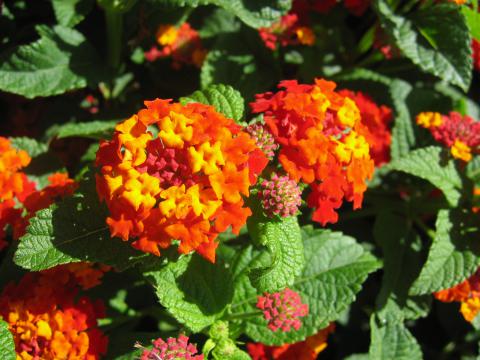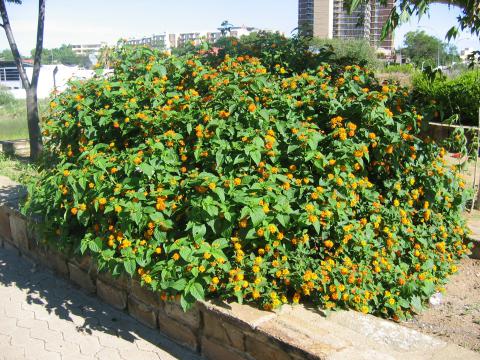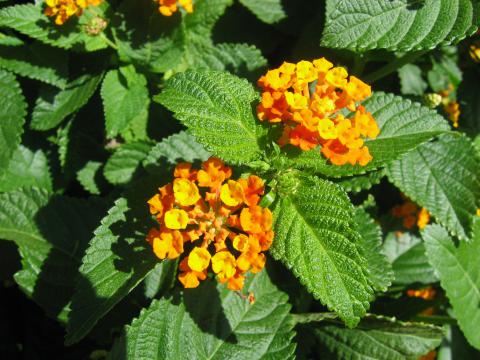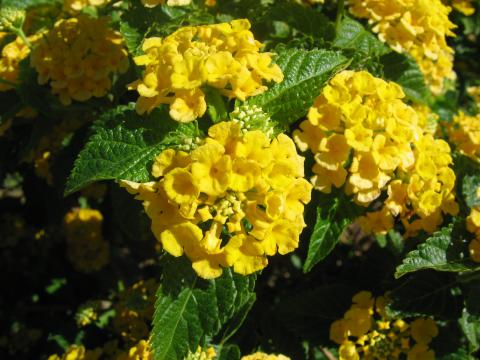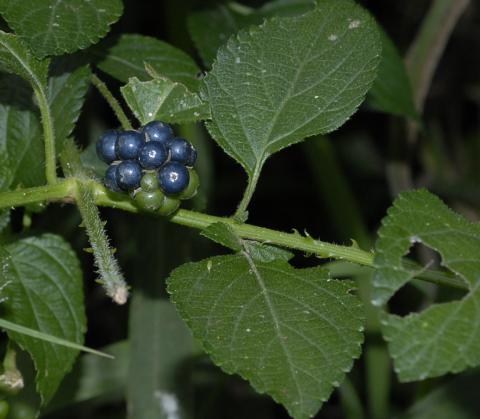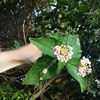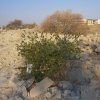Summary details for Lantana camara
Lantana
Lantana camara
Common names: Lantana, Tick-berry (English); Gomdagga, Wilderoosmaryn (Afrikaans); Kap'sche Stachelbeere (German)
Origin: South and Central America
Description
Erect, compact or spreading to clambering, many-branched shrub, up to ± 3 m high. Stem angular, roughly hairy, often with unpleasantly sharp, curved prickles. Leaves opposite, ± ovate, dark green, leathery, puckered due to prominent veins, roughly hairy, strong-smelling when crushed; margins toothed, tips pointed. Flowers small, trumpet shaped, carried in dense clusters near branch tips, vary in colour from yellow to orange or red and mauve or pink to white, often a combination of several of these colours. Fruit carried in clusters of shiny, round berries, each +5 mm across, green becoming purplish-black when ripe, poisonous to mammals but eaten by birds.
Distribution/Discussion
Highly invasive, noxious species often cultivated as an ornamental or a hedge. Has already become a problem in the Waterberg, Otavi and Rundu areas, often along watercourses. Seeds are spread by birds that eat the berries. This plant is a common cause of stock poisoning, mainly in cattle, in southern Africa.
» See all records of Lantana Lantana camara

